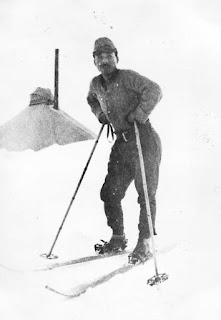Recently, a distant family member was kind enough to share some photos from an old family album passed down through the years. Understandably, some were shots of family members long gone. Surprisingly, there were also some photos that were either taken by a late-relative or passed on to him that showed shocking scenes of the aftermath of the battle of Attu.
Nowadays, most people have forgotten (or never knew) but during World War II the Japanese military invaded the islands of Kiska and Attu, found on the very far tip of the Aleutian chain. These were the only times that the Japanese military set foot on the mainland United States. On June 7th of 1942, the Japanese landed and took over Attu unopposed. They had also invaded the nearby island Kiska one day earlier. Almost a year later on May 11th, the US military made an amphibious landing and after a brutal battle, retook the island. The battle lasted 19 days and the cost of lives, especially for the Japanese forces, was high. Of the US force of 15,000, 549 were killed. The smaller Japanese force of 2,900 lost 2,872. Only 28 prisoners were taken.
Among the brutal pictures that were passed on to me, there were a handful of pictures that were taken off the bodies of the soldiers after the battle. They were probably taken during the period that the Japanese occupied the island (for months they basically had nothing to do). They are surprisingly playful in nature. I'm not sure if these photos (or copies of them) made it back to their families back in Japan but I hope they did. Although I'm not sure where to start, since I'm in Japan currently, I may try and see if there is a way to forward these images to relatives of the soldiers. I've chosen not to share any of the gruesome photos here because I don't believe it would right.
While researching this topic, I also came across an excellent program on the battle from an Alaska station. In the report, they talk about a book that was written by one of the natives who survived the invasion (he was six at the time). The program is really well done and worth a look. I'm also happy to see that the book, "Attu Boy", is available in PDF form online for free. Below is the program from KTVA.





